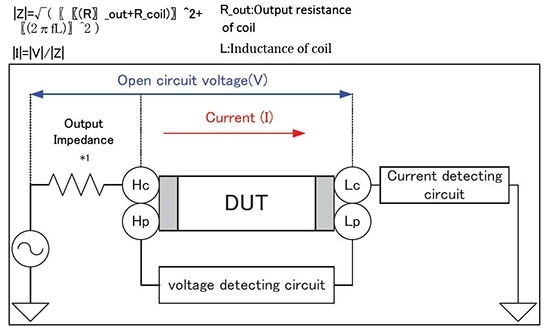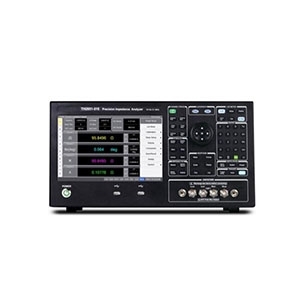Impedance analyzer, also known as vector network analyzer, is a common test instrument used to measure the impedance response of a circuit or material to alternating current. It is an essential tool for most electronics, power, measurement, radio and communication professionals, and is widely used in the research and development, production and maintenance of the electronics industry. This article will introduce the principle, components and applications of impedance analyzer to help you better understand impedance analyzer for your efficient impedance measurement.
Components of Impedance Analyzer
The main components of an impedance analyzer include: a signal generator, electrodes, a signal processor, and a display. The signal generator is used to generate an AC signal, usually at a frequency of 20kHz. The electrodes are used to introduce current into the object being measured, usually with a single or multiple electrodes. The signal processor is used to process the measurement results, such as calculating parameters such as resistance, capacitance, and inductance. The display is used to display the measurement results, usually in the form of digital display or curve display.
Principle of Impedance Analyzer
The principle used by the impedance analyzer is the transmission characteristics of alternating current in the object being measured. The characteristic of alternating current is that its frequency can change, so the impedance analyzer can be used to measure parameters such as resistance, inductance and capacitance at different frequencies. The impedance analyzer can use one electrode or multiple electrodes to introduce current into the object being measured through the electrodes, and the corresponding changes can also be read on the electrodes, so that the impedance of the object being measured can be calculated.

Specifically, the impedance analyzer applies a low-frequency AC impedance signal (for example, 20kHz) and measures the signal changes after the current passes through the object being measured, and then infers the impedance, capacitance, inductance and other parameters of the object being measured. In other words, the impedance analyzer uses a non-invasive method to determine the internal electrical characteristics of the object being measured.
Impedance can be expressed by the following formula:
Impedance = Voltage / Current
The unit of impedance is ohm (Ω), the unit of voltage is volt (V), and the unit of current is ampere (A).
Advantages of Impedance Analyzer
- High precision: Impedance analyzer is an instrument based on numerical simulation and computer-aided design that can measure and analyze the impedance characteristics of circuits or materials with high precision.
- Wide frequency range: The impedance analyzer can measure a very wide frequency range, covering from the kHz level to the GHz level, which can meet the needs of different application fields.
- High data credibility: The data processing and analysis software of the impedance analyzer is mature, and the credibility of the test results can be improved through data correction, modification and comparison.
Applications of Impedance Analyzer
Impedance analyzers are widely used in many fields. The following are some examples of their applications in several major fields:
- Electronic Engineering: In the field of electronic engineering, impedance analyzers are widely used in circuit design and testing and verification of electronic components. By measuring the impedance parameters of different components, engineers can evaluate the performance, stability and impact of components on the overall performance of the circuit. Impedance analyzers can also be used to diagnose circuit faults and improve circuit design.
- Materials Science: Impedance analyzers play an important role in materials science research. By measuring the impedance characteristics of materials, researchers can understand the conductivity, dielectric constant, and other electrical properties of materials. This is of great significance for material performance evaluation, new material development, and material optimization in various application fields.
- Battery Technology: In battery technology research and development, impedance analyzers are used to evaluate battery performance and life. By measuring parameters such as the internal resistance and electrochemical impedance of the battery, the battery's state, capacity, and charge and discharge characteristics can be understood. This is of great significance for battery design, optimization, and the development of battery management systems.
- Medical Field: Impedance analyzers are widely used in the medical field to measure biological tissues and physiological parameters. For example, bioimpedance measurement can be used to assess skin health, detect muscle function, and monitor the status of the heart and respiratory system. Impedance analyzers can also be used for applications such as body fat measurement and body fluid analysis.
- Environmental Monitoring: Impedance analyzers play an important role in environmental monitoring. By measuring the impedance characteristics of samples such as soil, water or atmosphere, their electrochemical activity, pollution level and other environmental indicators can be evaluated. This is of great significance for environmental protection, resource management and pollution control.
- Petroleum and Chemical Industry: In the field of petroleum and chemical industry, impedance analyzers are widely used in fluid processing and pipeline monitoring. By measuring the impedance characteristics of the fluid, the composition, concentration and flow properties of the fluid can be evaluated to help optimize the process and ensure production quality. Impedance analyzers can also be used to detect pipeline leaks and monitor corrosion.
Impedance analyzer is an instrument widely used in medical testing, material testing, circuit engineering and other fields. The principle used is the transfer characteristics of alternating current in the object being tested, and can be used to measure parameters such as resistance, inductance and capacitance at different frequencies. The main components of the impedance analyzer include signal generator, electrodes, signal processor and display. Impedance analyzer can be used in medical testing, material testing and circuit engineering, and has a wide range of applications in these fields. Visit SISCO store to learn more information about impedance analyzers and their used.


